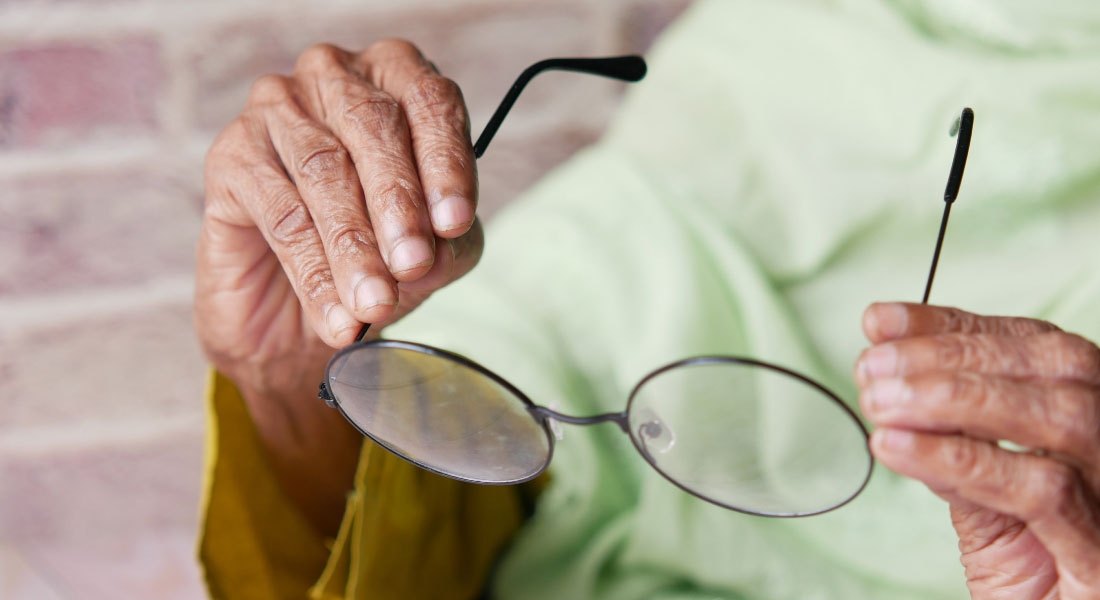New research to detect glaucoma timely
Each year, more than one in 10 Danes experience vision problems that are so severe that they are forced to get help. Researchers from the University of Copenhagen receives a grant to launch a project to identify early signs of eye diseases before they develop in the patient.

Each year, challenges with sight prompt more than 700,000 Danes to go to the doctor. The figure has increased by 30 percent in just 10 years, and experts estimate it to continue to rise. In some, the disease is discovered too late, reducing the chances of effective treatment. This is the case of e.g. glaucoma, a disorder which over a period of years gradually reduces the field of vision while the brain credibly fills in the blind spots.
Researchers are still uncertain about who is at risk for developing these diseases, but the new Project FOREVER, intends to change that. The project is a collaboration between professors at the University of Copenhagen, international researches and Synoptik A/S, explains Miriam Kolko who is Senior Consultant and Glaucoma Specialist at Rigshospitalet and Professor in Translational Eye Research at the Department of Drug Design and Pharmacology, University of Copenhagen.
“We do not know who is at risk of developing sight-threatening diseases. The project will collect data over a period of time, making it possible to identify those at risk of developing a severe visual impairment or losing their eyesight completely. The project will thus hopefully pave the way for better visual health and improved quality of life,” says Miriam Kolko.
The project has received around DKK 14 million from Synoptik-Fonden, which together with all Synoptik shops in the country hope to attract at least 250,000 participants to the project divided into two groups.
Computers to identify connections
The collected data will be analysed using artificial intelligence designed to identify those at risk of developing eye diseases and why.
“The collected data will be transferred to researchers in the Brunak Group (Novo Nordisk Foundation Center for Protein Research, University of Copenhagen), which is responsible for the computer technology behind the project, and subsequently, artificial intelligence will be trained to identify connections between characteristic findings and eye diseases,” explains Miriam Kolko.
“This is the knowledge we need to be able to characterise the group of people at risk of developing sight-threatening diseases and, at the same time, identify those not at risk of developing a visual impairment. We hope this will lead to more optimal use of societal resources, as the current procedure is to examine and treat citizens who are often not at risk of developing an eye disease.”
For example, the artificial intelligence solution is meant to automate the scanning of the small blood vessels in the retina. The diameter of the vessels can probably provide information about the expected associations between blood vessels of the retina and sight-threatening eye diseases.
“In connection with the project, we will compare our data with data from the national registries available through Statistics Denmark in order to develop the strongest possible database for eye diseases. The objective is to identify associations between eye diseases and their precursors, such as the person’s life expectancy, education, social situation, medication and so on,” says Miriam Kolko.
Largest eye database in Scandinavia
The participants will be divided into two groups, the first consisting of citizens above the age of 50 who have previously undergone an extended eye examination in one of Synoptik’s shops. If they agree to participate, they will be invited for new tests. The extended eye examination performed on the participants in this group will include i.a. visual acuity and eye pressure measurements, a picture of the background of the eye and an examination of the visual field.
Also, the participants’ blood pressure will be measured, and they will be asked to deliver a saliva sample for later DNA extraction and potentially gene analysis. Based on the clinical tests, the participants in this group will subsequently receive an assessment from an ophthalmologist. This part of the project shall help validate and optimise the collaboration between opticians and ophthalmologists.
“One third of these participants will be offered a retinal scan. This is to detect potential retinal edema, loss of specific retinal cells and optic nerve disorders. This is extremely interesting information that can tell us a lot about eye diseases and hopefully prevent people from suffering from unacknowledged eye diseases,” says Miriam Kolko.
“Both groups will also receive a questionnaire focussing on lifestyle and quality of life,” Miriam Kolko concludes.
The second group consists of citizens above the age of 18, who agree to share their data with project FOREVER.
Read more about FOREVER here.
Contact
Professor Miriam Kolko
+45 29 80 76 67
miriamk@sund.ku.dk
Professor Søren Brunak
+45 20 67 24 77
soren.brunak@cpr.ku.dk
